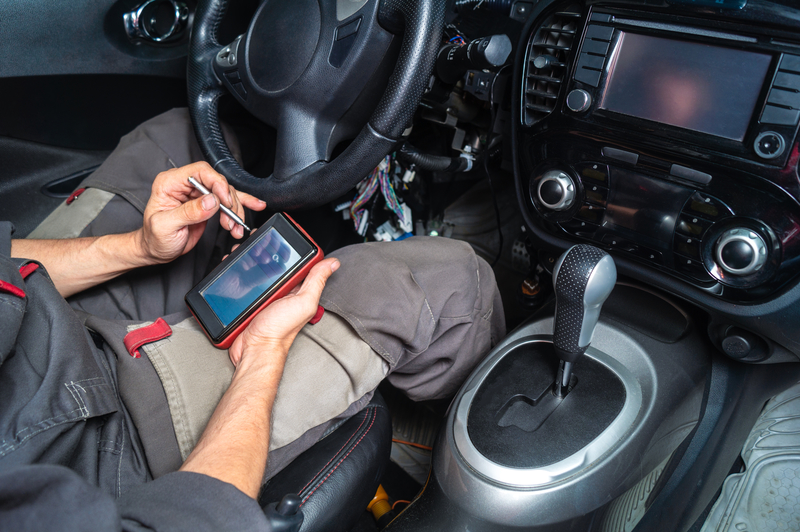Plug into a Better Understanding of Your Vehicle

You can’t get much information by looking at the little yellow “check engine” light on your dashboard. And there’s good reason for that.
The icon represents literally hundreds of potential problems ranging from simple fixes to complete overhauls. Automotive technicians rely on expensive diagnostic tools to root out the problem.
Auto stores sell code readers. Anyone can buy one and enter the voluminous world of “check engine light” codes, though they should still turn to the professionals for service.
“A code reader is an educational tool that can be empowering,” said Krisitin Brocoff, director of corporate communications for CarMD, a Southern California-based company specializing in vehicle diagnostics. “A code reader enables you to learn about your vehicle so you can talk to your mechanic intelligently about a problem.”
All vehicles sold since 1996 come with a diagnostic port usually found just beneath the steering column. The port provides techs a way to digitally communicate with the vehicle.
Code readers can diagnose problems related to sensors, the fuel system, airbags and the engine.
“Basically, an OB2 tool can diagnose anything the vehicle’s computer picks up,” she said. “It doesn’t pick up mechanical stuff about houses, tire pressure or belts.”
Diagnostic tools are only as good as their database, Brocoff said, encouraging people to opt for a product that routinely updates its software, firmware and repair databases.
As for when to use your code reader, Brocoff suggests running a diagnostic check before a long road trip or when researching a used vehicle. Equally beneficial would be a checkup prior to a smog test or a major repair.
Even if the check engine light hasn’t clicked on, code readers can alert you to common problems with your specific make and model.
CarMD’s reports provide a list of technical service bulletins, which are issued by a manufacturer when multiple instances of the same problem occur. For example, several other people who own the same type of vehicle as you have complained about a specific issue. The vehicle manufacturer becomes aware of the problem and issues a bulletin that a code reader can diagnose before the check engine light clicks on.
“Code readers are great for finding hidden problems,” Brocoff said.
Brocoff offers the follow advice for those interested in buying code readers:
- A code reader should be used for information first: Code readers will tell you why the check engine light is on and some will guide you to what parts are needed for repairs. You still need to take your car to a mechanic for certified repairs.
- Use it before a long trip: A diagnostic test on your vehicle can help you avoid any surprises before a road trip. Be sure to leave yourself time to schedule repairs if a hidden problem is found.
- You don’t have to wait for the check engine light to turn on: Code readers can find technical service bulletins–also known as “silent recalls.” The bulletins are related to common problems with your specific make and model.